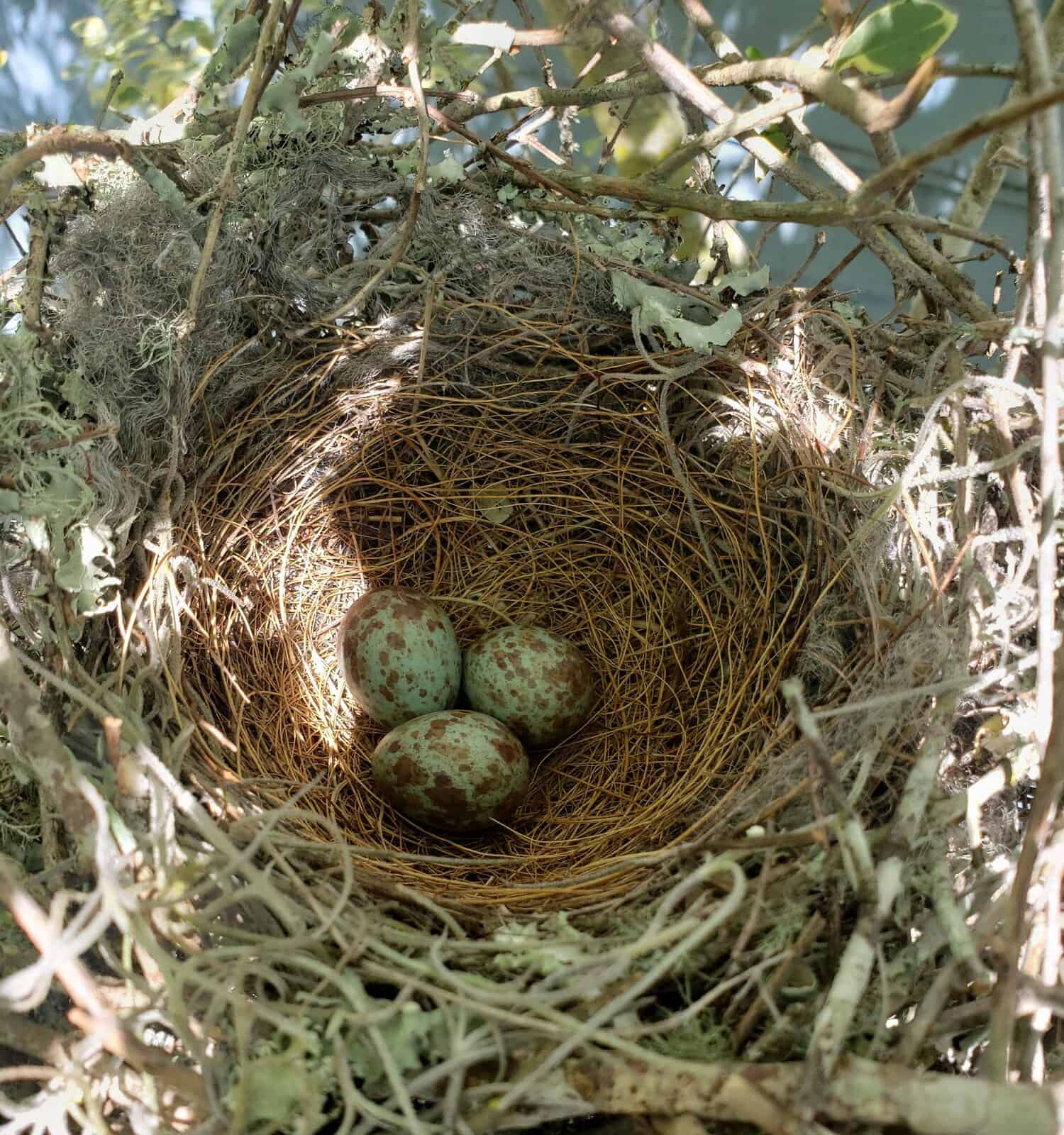The Northern mockingbird (Mimus polyglottos, meaning “many-tongued mimic”) is a well-known species throughout much of the United States. This popular songbird is also the official bird of five states — Arkansas, Florida, Mississippi, Tennessee, and Texas.
Where Do Northern Mockingbirds Live?
Northern mockingbirds are common throughout much of the Contiguous U.S. and Mexico, as well as the Caribbean. Although less common in the northernmost states, they have been steadily expanding their range northward. They can be increasingly found across the border in the extreme southern regions of Canada as well. While most are year-round residents, some populations in both the northern and southern limits of their breeding range may migrate further south to overwinter.
Northern mockingbirds have also been introduced to Hawaii. They have even been recorded a few times as extremely rare vagrants in Great Britain!
Mockingbird Breeding Season

Unlike some other common yard birds, such as northern cardinals, both adult male and female northern mockingbirds display the same basic gray, black, and white plumage pattern.
©Chris Klonowski/Shutterstock.com
Northern mockingbirds are prolific breeders. They actively nest from early spring to later summer and can raise 2 to 3 broods per season. Males first establish territories through competitive boundary dances and will also engage in both ground and air courtship displays to attract females to their territory. Paired mates will then work together to build nests and raise young.
Mockingbird Nests and Eggs

Northern mockingbird nests are generally started by males and completed by females.
©Ashley0825/Shutterstock.com
Researchers believe the male chooses potential nest sites and may begin building multiple nests before the female chooses one. Males construct most of the outer twig foundation of these open-cup nests. Females then finish the inner lining with softer materials such as leaves, grasses, moss, and, increasingly, artificial materials such as paper, plastics, and other trash. Mockingbirds most commonly build their nests 3-10 feet off the ground in shrubs and trees, though higher nests may occur. They rarely reuse their nests, however, new nests may be built on top of old ones. It can take three days to a week to build a northern mockingbird nest.
Females lay clutches of 2 – 6 eggs (usually 3 – 5). Egg color color varies from pale blue to greenish white with brown or red splotches. Females incubate these eggs for 12 – 13 days and may sing while in their nest.
Mockingbird Parental Care

Northern mockingbirds generally feed their chicks a mix of arthropods and fruits, although nestlings in southern Florida are also fed small lizards.
©Tommy Daynjer/Shutterstock.com
While the female continues to do most of the brooding, both parents share feeding and cleaning duties. Both males and females also aggressively defend their nests. These bold birds will regularly attack much larger predators, including swooping at humans who get too close! Furthermore, multiple mockingbird families may band together to drive away a particularly aggressive predator.
Nestlings fledge about 12 – 13 days after hatching. Parents continue to watch over and feed newly fledged birds; often, this duty falls to the male if the female is busy incubating her next clutch.
The photo featured at the top of this post is © Microfile.org/Shutterstock.com
Thank you for reading! Have some feedback for us? Contact the AZ Animals editorial team.






